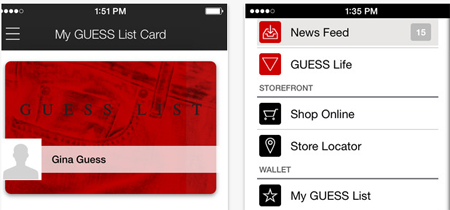How To Push Mobile to the Max to Provide an Omnichannel Experience

A recent report from Gartner has warned that weak mobile customer service is harming customer engagement. The report predicts that marketers will need to be innovative in their customer engagement across all channels if they want their brand to remain relevant in 2015.
In support, a study from Dyn also found 40 percent of UK customers are unhappy with the lack of an omnichannel mobile customer experience. What, it seems, is holding this channel back?
Omnichannel personalization: website vs. mobile browsing
Smartphones have made consumers more informed, more mobile, less private, and more social than ever before.
On the one hand, this new connectivity has been a huge benefit to marketers, who are now able to keep track of customer behavior across a various different platforms, but on the other, many brands still have a long way to go before they are able to offer the kind of personalized, location-based targeting consumers have grown to expect when mobile shopping.
On a website, the key with omnichannel personalization is keeping track of user engagement - e.g. search queries, clicks and impressions. This is the fundamental data that allows you to build a profile for each online customer. It becomes easy to present a consistent brand message across channels when each channel has access to this historical data.
The challenge with mobile is that, on top of synchronizing a customer's wish list from previous channels, we also need to take into account when and where a customer performs a particular action. Integrating customer data between website browser and mobile device is the foundation of an omnichannel strategy, however to take the mobile experience to the next level we also need to be able to combine present context with past history.
Creating incentives to leverage customer data
Marketing teams need to be much more shrewd and creative if they want to impress their mobile customers. However, it's fruitless trying to personalize the experience if the consumer isn't willing to part with their data. So what can we offer as an incentive?
A sure way to get the data you need from mobile customers is by offering an app which requires login details - this way, wherever they log on (whether on a website or mobile app) all data is linked up between channels.
Guess, for example, launched their mobile app in early 2014 as a way to forge a closer relationship between the brand and its customers. The concept was essentially a loyalty program where customers serve as brand ambassadors by promoting the products through their social media channels. In return for sharing, they were awarded discounts and rewards that could be redeemed at stores.

The app collated data about each customer, meaning that Guess could cross-sell products based on previous purchases or promotion responses. Using geo-fencing and deep data analytics, they were also able to offer instant promotions to customers that were immediately relevant based on location and previous purchases. The result was a seamless omnichannel experience that blurred the line between in-store and online shopping.
Optimizing the path to purchase on mobile devices
Although the vast majority of retail purchases currently still take place in stores, the purchase decision process is increasingly flowing through smartphones. In addition, a growing number of consumers are now completing the checkout process on smartphones and tablets - 32 percent, in fact, of online purchases are now made via mobile devices.
Despite this growth in mobile commerce, mobile conversion rates remain at a dismal 3 percent. This is partly to do with the average mobile checkout process requiring around 24 steps, and sometimes even the lack of response design, but there are also other omnichannel factors influencing the path to purchase on mobile.
Bridging online and offline channels
ResponseTap has found that, despite ever growing trends in digital, the majority of consumers still recognize the value of the human voice. According to their research, 70 percent of respondents still like speaking to an operator on the phone, as it gives them peace of mind and confidence that they are getting exactly what they want.
A big challenge with smartphones is that they are essentially both an online and offline channel, which allow consumers to browse the Web, as well as to call the contact center from the same device. If you want your call center to be integrated into your omnichannel strategy, then you need to have a way to supply your sales rep with the customer data they need as soon as they go to pick up the phone.
"Call Whispers", is a great piece of software which does just that - it feeds your contact staff information about how a consumer has been browsing your mobile site or app (e.g. which search terms they entered, which ads and pages they clicked on) allowing them to deliver much more targeted customer service.
The marketer's job: less is more
Today's buyers are entirely self-driven. In fact, according to Rishi Dave, Dell's executive director of global marketing, consumers are already 60 percent through their buying journeys by the time they reach out to a company sales reps.
The job of the modern digital marketer is to take a back seat in the customer journey. Allow the consumer to do their own pre-purchase decisions, but be sure to show up in the right places along the journey (should they need a little extra push).
Businesses who manage to walk this fine line - who offer incentives without being overbearing, and who leverage customer data to go omnichannel - have a unique opportunity to stand out amongst their competitors. Online retailers must realize that mobile devices are not only tools to drive innovation, but also an ecosystem that can transform customer experiences.








